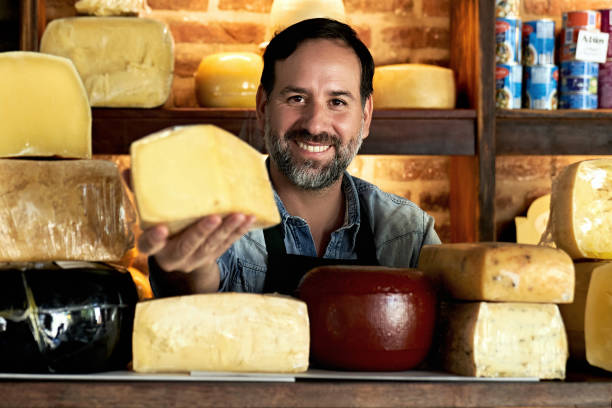Everyone wants to get the best out of food. We also want to reduce food waste. Properly storing food will make it last longer. Cheese in all forms is very popular. Proper storage is crucial to ensure everyone can enjoy cheese at its best.
The best cheese is like fine wine. It is an art form that is based on science.
Which are the best cheese storage containers?
You should be aware that there are many ways to store cheese. This will depend on what type of cheese you have. Certain cheeses are best stored in special containers. Others can be wrapped in cheese paper, cheese paper, or clingfilm.
Bacteria need food and moisture to survive. Cheese with a lower moisture level tends to last longer. Parmesan and other hard cheeses have low moisture content. Clingfilm is better than waxed cheese paper or baking parchment. The paper will let air through and dry the cheese out.
How to Store Cheese in the Fridge
Cheese can be kept in the refrigerator at a constant, low temperature. This will prevent bacteria growth and ensure that your cheese stays fresher for longer. Different types of cheese require different storage requirements, as we have seen.
Many soft kinds of cheese purchased in supermarkets are packaged in foil-sealed tubs. Philadelphia and its equivalents), in small portions in liquid (e.g. mozzarella and feta), or wrapped in portions in liquid (e.g. Camemberts are ready to go in the oven. These materials were carefully chosen to ensure that the cheese is kept in the best possible conditions for their individual needs. Wooden collars allow cheeses like Tunworth air to circulate while inhibiting the growth and development of bacteria.
How to store cheese in the freezer
Sometimes, it is necessary to freeze cheese. This is a great way of reducing waste and prolonging the shelf life of cheese. While freezing cheese is safe and can extend its shelf life by prolonging its shelf life, it will hurt the product’s texture and flavour.
Cheeses with high moisture levels, such as soft cheeses like camembert and brie, can form ice crystals when frozen. Low temperatures can also cause them to lose their moisture, making them dry and harden. Freezing cheeses that you would like to enjoy on a cheeseboard is not recommended.
It is okay to freeze a block or two of cheddar you plan to grate and use in your recipe for cauliflower cheese. You can freeze cheese by wrapping it in waxed paper or baking parchment. Once it is frozen, you can use it within six months.
Can you eat cheese with mould?
In some cheeses, like stilton, mould is intentionally present. To enhance the cheese’s flavour, blue and white vein moulds are introduced to the cheese. It forms in cracks and air pockets. Different strains of penicillin are responsible for the blue (and white) moulds.
Penicillium roseforti has been chosen to make blue cheese. It adds flavour, which is why it is so distinctive. Penicillium camemberti, on the other hand, is used to make surface-ripened cheeses such as brie or camembert. It forms the white furry outer edges. Because they don’t produce the same mycotoxins as other foods, these penicillin moulds can be eaten unaffected.

